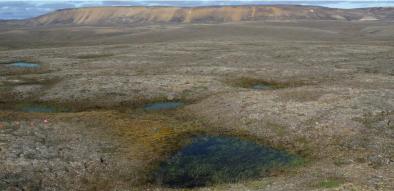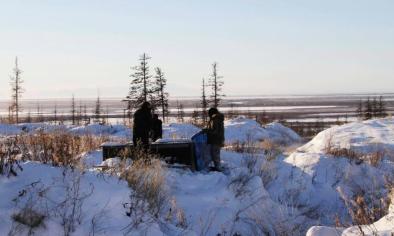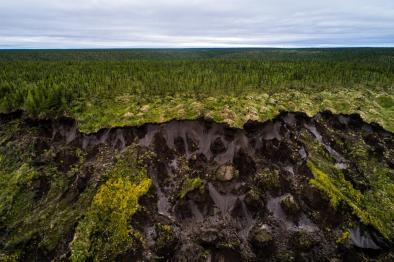Science Source
Strong geologic methane emissions from discontinuous terrestrial permafrost in the Mackenzie Delta, Canada
- States that Arctic permafrost caps vast amounts of old, geologic methane (CH4) in subsurface reservoirs
- States that thawing permafrost opens pathways for this CH4 to migrate to the surface; however, the occurrence of geologic emissions and their contribution to the CH4 budget in addition to recent, biogenic CH4 is uncertain
- Presents a high-resolution (100 m × 100 m) regional (10,000 km²) CH4 flux map of the Mackenzie Delta, Canada, based on airborne CH4 flux data from July 2012 and 2013
- Identifies strong, likely geologic emissions solely where the permafrost is discontinuous; such peaks are 13 times larger than typical emissions due to microbial production
- Notes that, whereas microbial CH4 production largely depends on recent air and soil temperature, geologic CH4 was produced over millions of years and can be released year-round provided open pathways exist; therefore, even though they only occur on about 1% of the area, geologic hotspots contribute 17% to the annual CH4 emission estimate of the study area
- Suggests that this share may increase if ongoing permafrost thaw opens new pathways
Related Content
Headline

Jun 19, 2019 | Reuters
Scientists amazed as Canadian permafrost thaws 70 years early
Science Source
Permafrost is warming at a global scale
Boris K. Biskaborn, Sharon L. Smith, Jeannette Noetzli et al
Headline

Jan 17, 2019 | Washington Post via AP
World’s permafrost gets warmer; Siberia rises the most
Headline

Aug 21, 2018 | National Geographic
Exclusive: Some Arctic Ground No Longer Freezing—Even in Winter


